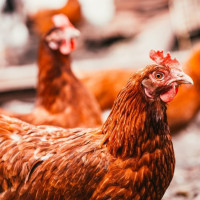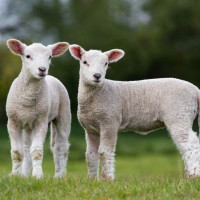Articles tagged with 'Farm animal husbandry'
How should farm animals be managed during drought?
The frequency of exceptionally hot years, low rainfall and low soil moisture has been increasing in recent decades and this trend is expected to continue across Australia in the years to come.
What is veal?
Veal is the meat from a younger animal of either a dairy breed, dairy crossbreed or beef breed.
Is permanently housing dairy cows indoors an animal welfare issue?
There are over 1. 4 million dairy cows in Australia. On average, each cow produces close to 6,170 litres of milk a year.
What are the animal welfare issues associated with duck production?
Ducks may be farmed in Australia for their meat, eggs or feathers. Domestic ducks used in duck farming all originate from the wild mallard duck (Anas platyrhynchos). The main breeds used are Pekin and Muscovy ducks. Ducks farmed for meat will typically be slaughtered between 6-7 weeks of age.
Is tethering of farm animals acceptable?
Tethering is where an animal is fastened by a chain to a central anchor point, causing it to be confined to a specific area.
Does extreme heat affect farm animals?
The frequency of exceptionally hot years is expected to continue across Australia in years to come, which means that consecutive days of extreme temperatures (heat waves) will not be uncommon.
What are the animal welfare issues associated with pig production?
In Australia, pigs farmed for meat may be housed in intensive indoor, semi-indoor (outdoor-bred) or outdoor (free-range) farming systems. Intensive indoor housing systems can lead to several serious welfare problems.
How much space does a layer hen need?
For layer hens to experience good animal welfare it is important they have enough space to move freely and express motivated and natural behaviours such as nesting during egg laying, perching, and roosting, foraging, and dust bathing.
What are the animal welfare issues associated with turkey production?
Turkeys, along with chickens and ducks, are one of the more common species of poultry farmed for meat. Domestic turkeys were originally bred from wild turkey stock native to North America.
What is the RSPCA’s view on mulesing and flystrike prevention in sheep?
Mulesing involves cutting crescent-shaped flaps of skin from around a lamb’s breech and tail. When this painful wound heals, it creates an area of bare, stretched scar tissue which has no folds or wrinkles and is less likely to attract blowflies.



